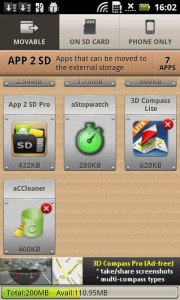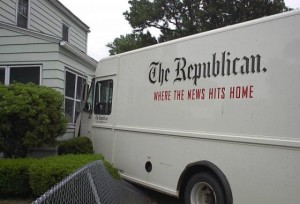Welcome to my new feature, Awesome Android App of the Day, where I will highlight some of the cool, fun, and useful Android apps that I find. Contrary to the name, it will not likely be a daily feature…I’m lucky to write more than one post every three months.
Most Android devices have two locations where files are stored, built-in storage on the device and removable storage, such as an SD card. The non-removabale built-in storage holds the device’s operating system and other files needed to operate the device. The removable storage is intended for your personal files including the pictures you take and music and video you download, as well as other files such as those that store the preferences you set for some of your apps. This system works well, because if your device ever fails, you can simply remove the SD card, plug it in to a computer or another device, and access all of your stuff that you would otherwise lose.
The apps you download, by default, end up on the device’s non-removable storage. Since this is generally fairly small, it will quickly fill up if you download a lot of apps. Fortunately, Android lets you move most apps to the SD card. Unfortunately doing this is a very manual, non-intuitive process.
Enter App 2 SD. When you start App 2 SD, it searches you phone for all of your apps and displays them in three lists: apps that can be moved to the SD card, apps that are already on the SD card, and apps that can only be installed on the phone. Tapping on an app takes you to the Android application info screen for that app where you can complete a number of actions including moving, force stopping, and uninstalling the app. Want to move all of your apps at once? Just tap the menu button and the option is there.

App 2 SD does a number of other useful tasks as well. A long hold on any app will open a menu that lets you start the app, uninstall it, or view its page in the Android market. App 2 SD will also warn you when your application cache reaches a certain threshold and will clear it with your permission.
My only complaint about App 2 SD is that it doesn’t actually move apps for you. Instead, it just loads the application info page for the app and let’s you move it manually, so moving a lot of apps is still a slow process. Nonetheless, it is a huge improvement over trying to move apps with only the tools Android provides. When you choose the “move all apps” option, the application info page for the first app opens. You move it and tap the back button which triggers App 2 SD to open the info page for the next app.
Even though its still a bit clunky to use, the simple fact that Android provides way to see where an app is stored other than by manually opening the app’s info page makes this app worth its weight in gold. Apps 2 SD is free to use, but it is ad supported. If you want to get rid of the ads or you need support from the author, a paid version is also available.

